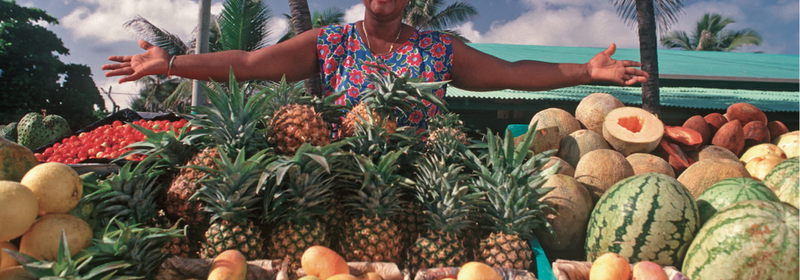Dominicans have a reputation for being among the friendliest people youâll meet. They exude passionâin the way they speak a mile a minute, the way they dress, and dance, and in their embrace of their fellow human being, be it neighbor or visitor. Their explosive energy could be explained in their mĂ©lange of Taino, African, and European roots. But to boot, European, Asian, and Middle Eastern communities have influenced and enriched the DRâ culture-scape since the 19th century, turning the population and culture into a fascinating melting pot. Youâll see our numerous influences showing up across regions in food, music, celebrations, and customs.
REPĂBLICA DOMINICANA

[I]t wonât take you long to meet locals, or notice the Dominican way of living. While modernism and globalization have modified the way of life in the big and small cities, Dominicans remain the same in their people-to-people interactions. Courtesy and hospitality are core values, particularly in the countryside. Coming to the aid of visitors or a neighbor, and sharing a plate of food are considered normal. Family is of the utmost importance, to be cared for and cherished. Head to the beach or to the river on the weekends, and you will see how Dominicans love to spend their free time with their loved ones, cooking outdoors and sharing jokes. Affectionate in words and action, romance runs in the Dominicanâs blood. Life is to be shared, and lived fully.
Dominicans are also renowned for their dancing talentsâyou will spot them spontaneously twirling at the park, on their house veranda, or pretty much anywhere they hear their music. The DRâs sounds and instruments are influenced by West African, Spanish, and European roots. Two principal genres dominate and are synonymous with the Dominican Republic, here and around the world: merengue, and bachata. But thereâs also son and a multitude of folkloric dance and music. Wherever you end up in the Dominican Republic, experiencing our music and our rhythms is as easy as stepping outside.
Merengue is the national music and dance of the Dominican Republic. In 2016, UNESCO proclaimed merengue as a Masterpiece of the Oral and Intangible Cultural Heritage of Humanity. Any Dominican will tell you that merengue is part and parcel of every Dominicanâs essence. Its lyrics share the everyday life stories, and its instruments reflect the DRâs triple identity: the gĂŒira comes from the Tainoâa long metal cylinder with holes, with a brush to run it up and down the cylinderâthe tambora or drum from Africa, and the accordion from Spain.
Todayâs merengue musicians are world renowned, including JoseĂto Mateo, Juan Luis Guerra, Johnny Ventura, Milly Quezada, Wilfrido Vargas, Fernando Villalona, Los Hermanos Rosario, and Eddy Herrera, among others.

Paisajes de postal perfectos
[T]he Dominican Republic occupies the eastern two-thirds of the island of Hispaniola, which it shares with the Republic of Haiti. The country is the second largest in the Caribbean region, with a surface area of 18,704 square miles (48,442 square kilometers). Located in the heart of the Caribbean, the Dominican Republic is surrounded by the Atlantic Ocean to the north and to the south by the Caribbean Sea.The Dominican Republic is known to have the most diverse topography for a single nation in the Caribbean region. You can go from a sandy beach to a cool, mountainous town over 500 meters (1,700 feet) above sea level in less than three hours. The countryâs coastline is no secretâracking up over 1,600 kilometers (1,000 miles) in total, with hundreds of accessible, breathtaking beaches. More surprisingly, DR is flanked by a series of grand mountain ranges, the most important of whichâthe Cordillera Centralâis home to the Caribbeanâs highest peak: Pico Duarte, sitting at 3,087 meters (10,128 feet).
With 25% of the land consisting of protected areas, most of which are easily accessed, there are a myriad of reasons to venture off the beach. Explore lush valleys, cloud forests, national parks on and off shore, rivers leading to waterfalls, offshore cayes where turtles nest, ancient Taino caves shrouded in thick rainforest, or pine forests with near zero temperatures. Discover natural wonders like Lago Enriquillo, a saltwater lake so large it surpasses the size of Manhattan, home to American crocodiles and sitting at 40 meters (138 feet) below sea level, the lowest point in the Caribbean.
It wonât take long to find your favorite Dominican landscape, after the beach.
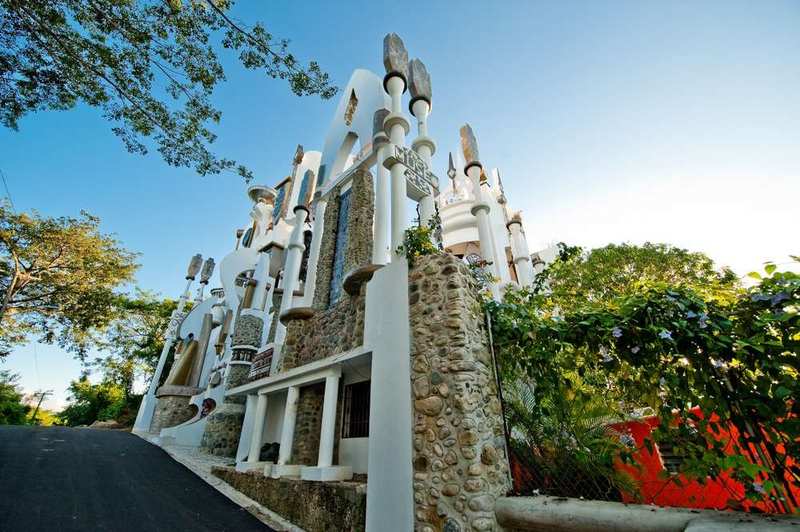
Museos Ănicos
[P]robably one of the most bizarre places on the planet is Castillo Mundo King (aka El Mundo King). This five-story castle on the top of a hill in Sosua is home to hundreds of unusual artworks, including alien-themed art, extraterrestrial messages, and at least four spaceships, as well as a sizable collection of exotic Haitian sculptures.Rolf Schulz, a German artist, decided at the age of 51 that he would leave his hometown, Hamburg, to pursue his dream of building a castle in the Dominican Republic. And so the Castillo Mundo King was born.
The artist began this labor of love in 1990 and lived in the dwelling with no electricity or running water until he died, in January 2018. Before his death he would regale visitors with stories of UFOs and extraterrestrial life. His self-built palace now functions as an otherworldly art museum.
The castleâs five floors are filled with several hundred pieces of surreal art, including an impressive collection of sculptures made by Haitian and Dominican artists (many of them exotic), as well as carvings in stone and wood, paintings, and murals. Those that climb the stairs all the way up to the top floor are met with a reward: The view looking out over the Bay of Puerto Plata is breathtaking
Museum buffs will find a bevy of other opportunities around the Dominican Republic. Santo Domingoâs Colonial Cityâthe first urban settlement in the New Worldâhouses excellent museums providing insight into the Spanish colonial daysâfrom the AlcĂĄzar de ColĂłn palace to the Museo de las Casas Reales, where the royal court was housed. The city also boasts a museum complex at Plaza de la Cultura, showcasing history and modern art, while the latest offering in the city is all about Dominican chocolate. In Puerto Plata, you can learn about national heroes and precious stones, while SamanĂĄ offers an insightful small museum on its humpback whales, and SosĂșa has a fascinating Jewish Museum. La Romanaâs Altos de ChavĂłn is home to the most comprehensive display on the Taino at the Regional Museum of Archeology.
Whether covering history, geography, precious stones, chocolate, baseball, rum, family life in the DR, or architecture, among other topics, thereâs a museum to fit all ages and interests
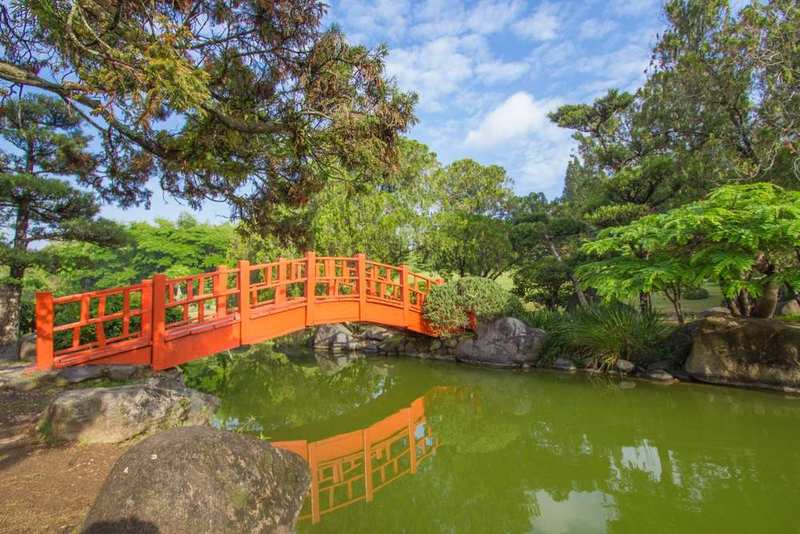
Tradiciones
[W]hile certain traditions are less practiced in the cities than in the past, the importance of two major seasons remainâparticularly in the countrysideâand are celebrated in family: Christmas and Easter.Each of these holidays represents a symbolic time for Dominicans to head to their respective hometowns and families, and spend it around their loved ones, cooking and enjoying traditional dishes, dancing, and relaxing.
For example, Dominican Carnivalâcarnaval dominicanoâis the most vibrant celebration of Dominican culture and identity. Itâs a time when Dominicans of all ages and from all regions take to the streets, at home or in neighboring carnival cities, to enjoy parades with their families and loved ones.
Every Sunday during the month of February, colorful parades take place in every major city and region around the DRâsome extending through the first week of March. La Vega Carnival is the oldest, largest, and most popular of all, followed by Santiago. Other cities hosting unique parades include Santo Domingo, Montecristi, Bonao, Puerto Plata, RĂo San Juan, and Barahona. Costumes, masks, and mystical characters are distinct to each area and reveal Dominican folkloric traditions and beliefs, as diverse as the countryâs population.
Christmastime is one of the most festive times of the year, aside from Carnival in February. This is particularly visible in the countryside, when families gather and visit from house to house to eat, drink, and dance. On Christmas Eve, entire pigs on a pit are slowly roasted out in the backyard all night long, while families listen to music and share drinks, with everyone keeping an eye on the meat. The tradition is to stay up and celebrate until dawn, when the meat is finally cooked.
Eastertime, the other longest holiday weekend, is when Dominicans escape their daily routine, much as they do for Christmas. While some head to the beach rather than practice religion, traditions remain: celebrating Semana Santa by going to church on Good Friday, and Holy Saturday, but also enjoying copious bowls of habichuela con dulce, a Dominican sweet beans dessert typical at this time of year.
The Dominican Republic has been a favorite destination for many years, attracting celebrities, sports personalities and travelers. In fact, the country now has the highest number of hotel rooms in the entire Caribbean, with over 69,000, according to the Hotel & Tourism Association (Asonahores).
Many of the worldâs top brands are here, including AM Resorts, BarcelĂł, BeLive, Blau Hotels, Crowne Plaza, Embassy Suites, BahĂa PrĂncipe, Hard Rock Hotels, Hilton, Holiday Inn, Hotetur, Iberostar, IFA Hotels, JW Marriott, Majestic Resorts, NH, Occidental, Palladium, Princess, Quality, Renaissance, Riu, Sheraton, Solaya Hotels, MeliĂĄ, Vista Sol, Westin and Viva Wyndham.
But the charm of the Dominican Republic is also in its small unique hotels, including Tortuga Bay (Punta Cana) and Peninsula House (SamanĂĄ) that made the Conde Nast Traveler Gold List.
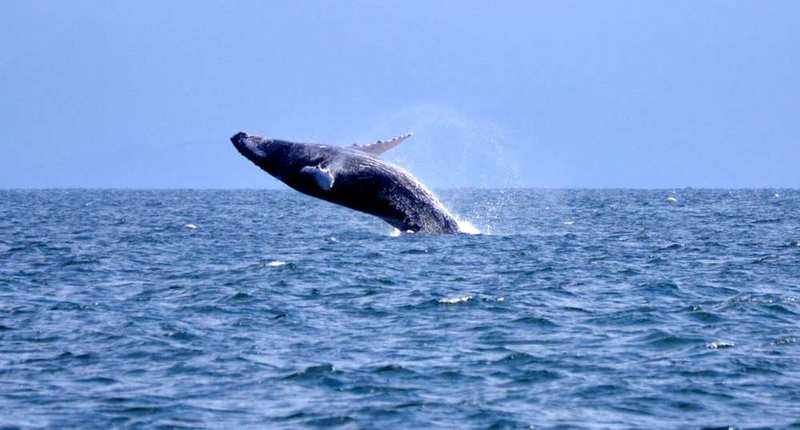
Tierra de descanso y relax junto al mar
[B]lessed with one of the Caribbean regionâs longest white sand coastlinesâa whopping 48 kilometers (30 miles), punctuated with sky-reaching coconut palmsâPunta Cana is the land of rest and relaxation by the sea. Here, where the Atlantic meets the Caribbean, from the northern tip at Uvero Alto to the southern at Cap Cana, all-inclusive resorts and boutique hideaways offer all the whims and comforts of modern beachfront living. Families enjoy miniature entertainment centers and water parks for children, while couples-only enclaves boast dream wedding locations, with secluded beachside lodging for an ultra-romantic stay. But itâs not only about fun in the sun, soft sand brushing against your toes, and iridescent, clear water to swim in, go fishing, or dive for underwater life and shipwrecks. Punta Cana is also a golferâs destination, with 10 courses located all along the strip, a seaside escape with luxurious marinas and fine dining, and a wellness corner home to the countryâs top spas, including the only Six Senses in the Caribbean.Jutting out of the DRâs northeastern shore and basking in the ocean, the nature haven that is the SamanĂĄ Peninsula is as coveted today as it was in the 16th century. Pirates hid in its lush, palm-filled forests, isolated beaches, and hidden caves, while European and Haitian troops competed over its deep water, protected bay. Today, SamanĂĄâoften abbreviated to refer to the entire peninsulaâis well connected by land and air, yet it remains the DRâs secluded, paradisiacal escape of wild beaches, coconut plantations, and rainforests. Its rolling mountains and valleys form the crystalline rivers that feed into the Atlantic, as they cascade toward brilliant white sand beaches stretching hundreds of kilometers all around the peninsulaâs rocky coastline.
Itâs as if the approximately 2,500 humpback whales that visit SamanĂĄ Bay every year appreciate this natural splendor as much as visitors do. The giant mammals return every year to this special corner of the DR to mate, birth, and bask in this glorious tropical scenery. Aside from seasonal whale watching boat excursions in SamanĂĄâs scenic bay, more ecotourism adventures are a stoneâs throw away: body-boarding and kitesurfing in Las Terrenas; trekking, birding, and caving in Los Haitises National Park; canyoning or horseback riding to reach El LimĂłn waterfall; and boat-hopping to magnificent white sand beaches at the base of 90-meter (300-feet) cliffs, or to offshore Cayo Levantado island.
MĂS ADICCIONES
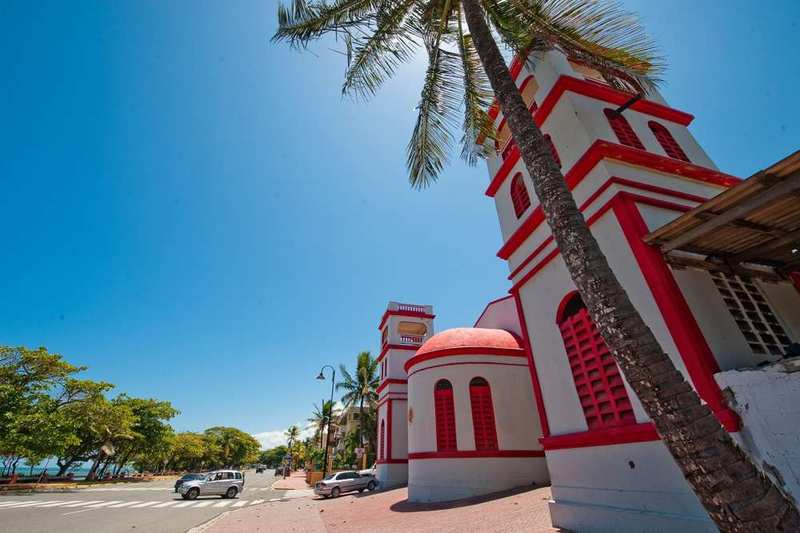 Live the Caribbean dream in Puerto Plata - Why vacation at Puerto Plata? Looking for a great… Read More
Live the Caribbean dream in Puerto Plata - Why vacation at Puerto Plata? Looking for a great… Read More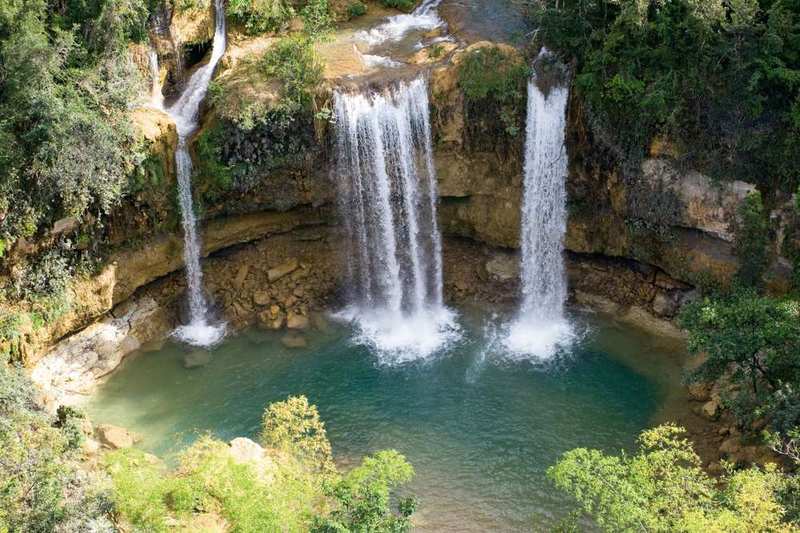 Romance travel trends high in the Dominican Republic - Ready to plan your romantic escape to Dominican Republic?… Read More
Romance travel trends high in the Dominican Republic - Ready to plan your romantic escape to Dominican Republic?… Read More
 Live the Caribbean dream in Puerto Plata - Why vacation at Puerto Plata? Looking for a great… Read More
Live the Caribbean dream in Puerto Plata - Why vacation at Puerto Plata? Looking for a great… Read More Romance travel trends high in the Dominican Republic - Ready to plan your romantic escape to Dominican Republic?… Read More
Romance travel trends high in the Dominican Republic - Ready to plan your romantic escape to Dominican Republic?… Read More
RECOMMENDATIONS FOR THE PRACTICAL TRAVELER
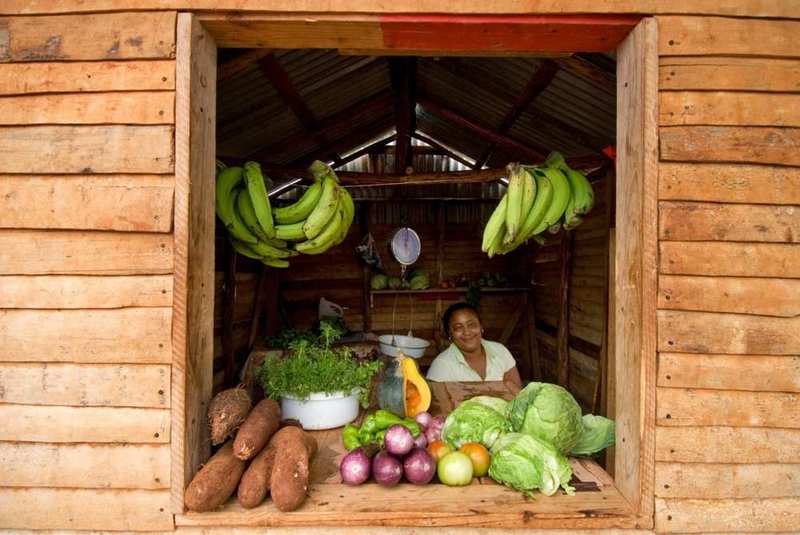
Ministry of Tourism
www.godominicanrepublic.com
www.mitur.gob.do
General Information and News
www.dr1.com
www.dominicanway.com
www.bohionews.com
www.accessdr.com
Hotels
Association of Hotels and Tourism
www.asonahores.com
Airports
Punta Cana:
www.puntacanainternationalairport.com
Santo Domingo, Puerto Plata, Samana, Barahona:www.aerodom.com
Santiago:
www.aeropuertocibao.com.do
La Romana:
www.romanaairport.com
Tour Operators
Association of Incoming Tour Operators (OPETUR)www.opetur.net

